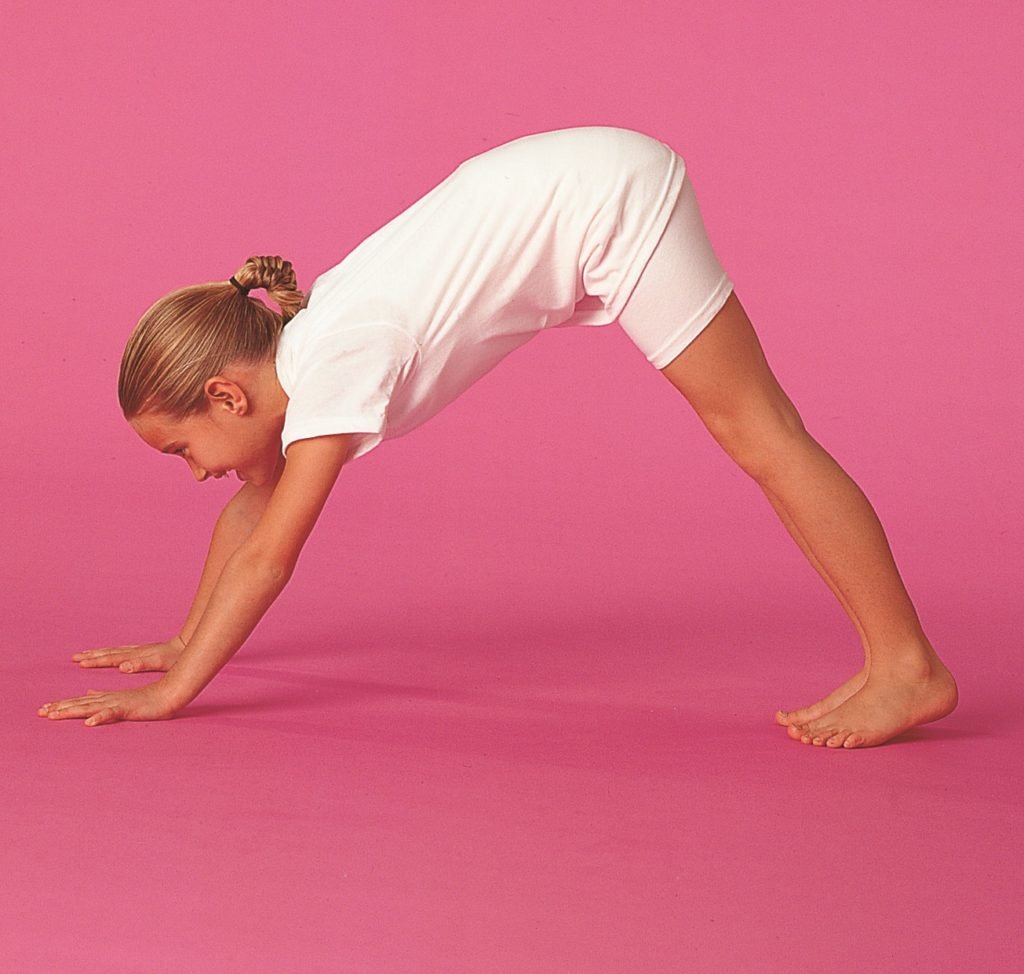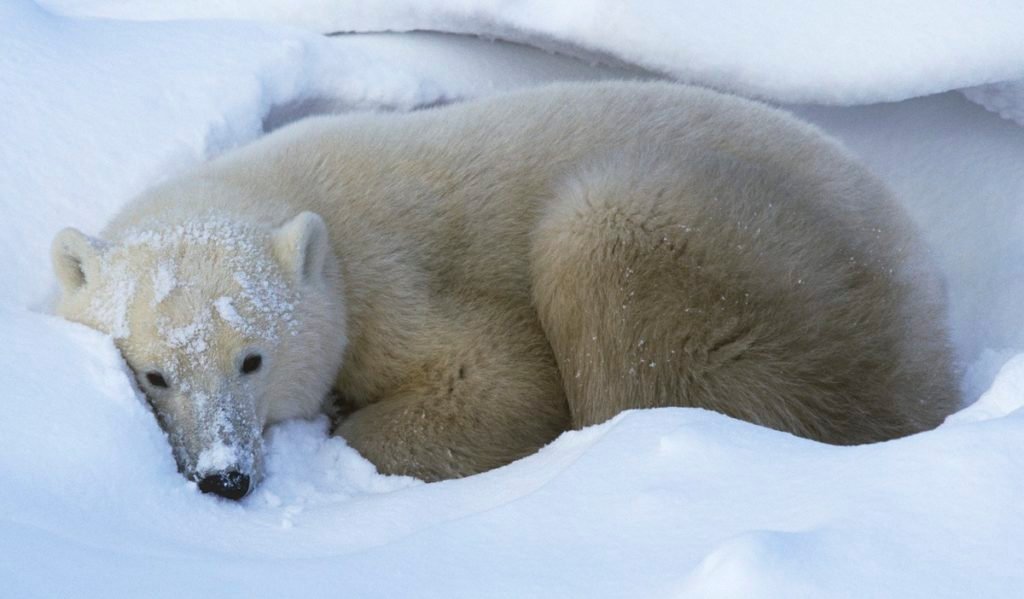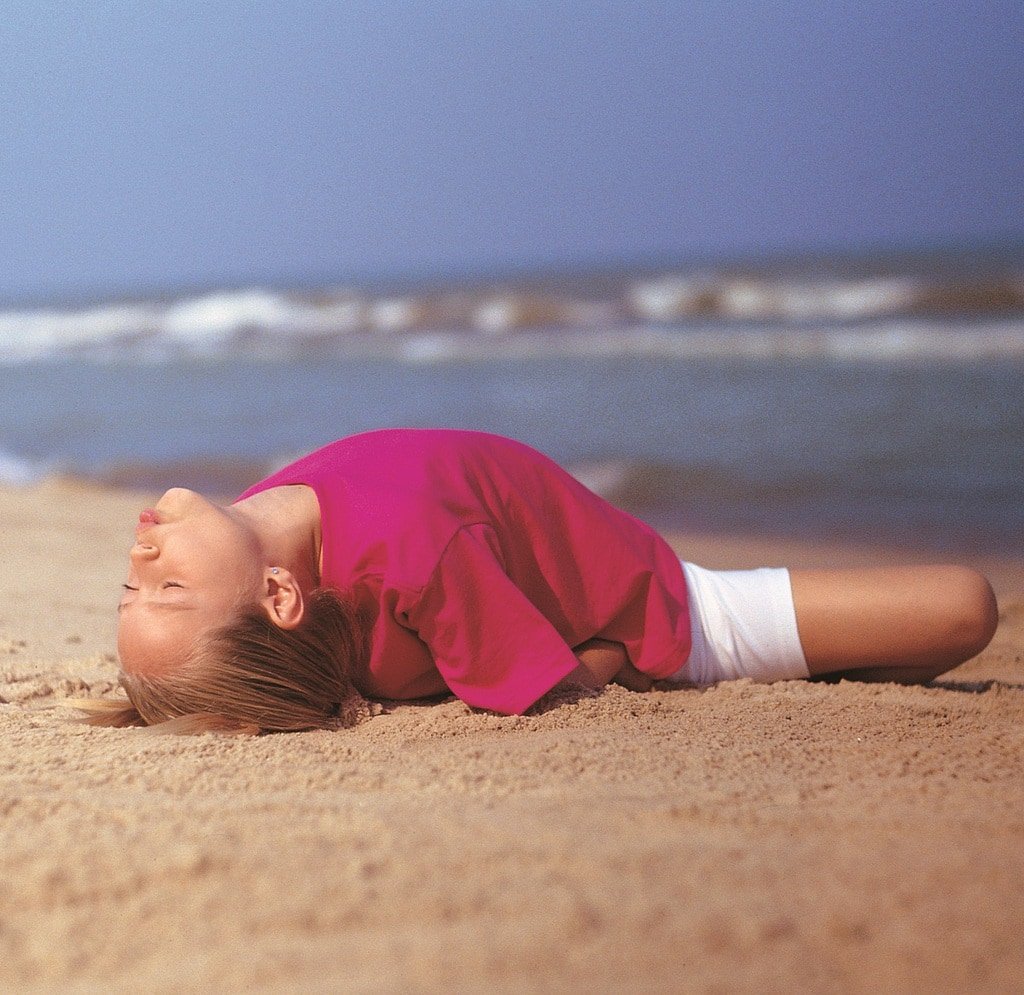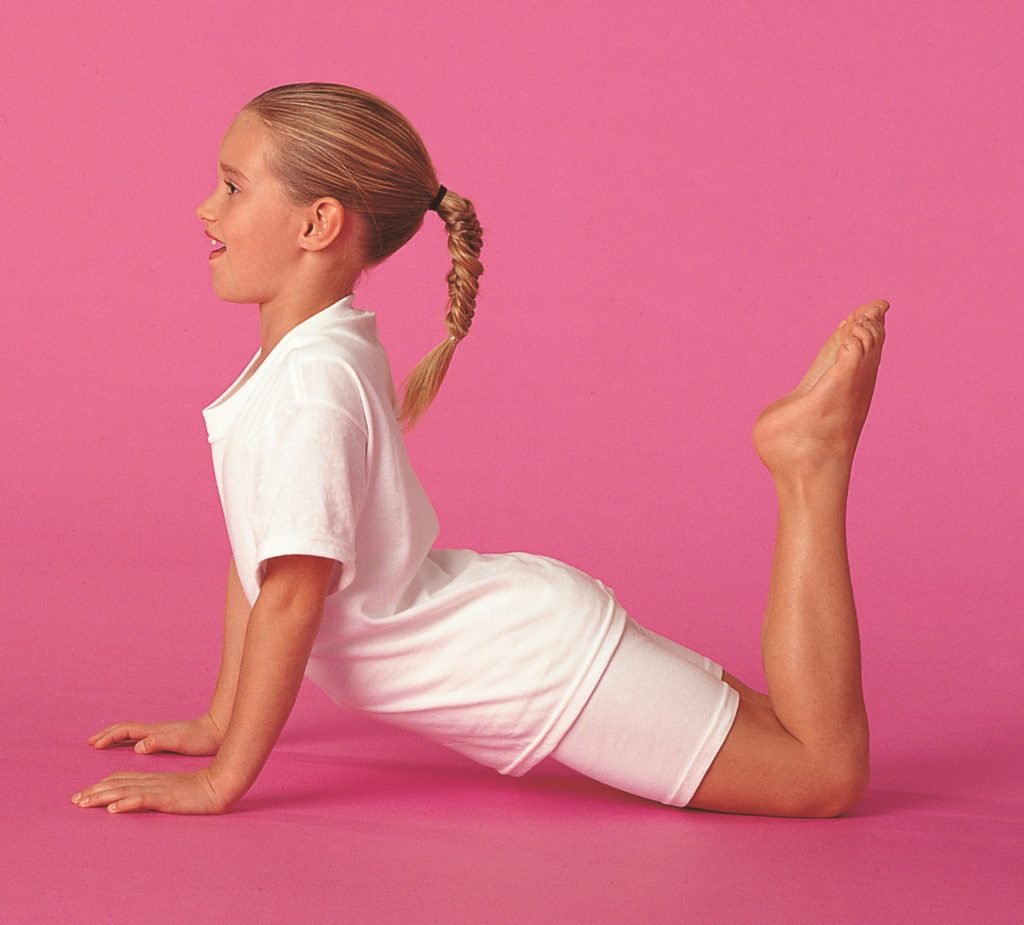
Dogs have been our best friends for over 12,000 years. They frequently roam in packs, just like many kids do!
Instructions
- Begin on your hands and knees in all fours.
- Bend your toes forward.
- Spread your fingers wide.
- Press your doggy paws and heels downward, as you lift your hips and tail to the sky.
- Lengthen your spine. Stretch your arms and legs as long as possible.
- Release your neck and head down.
- Growl, yawn, bark and make other doggy sounds!
Mark Your Territory!
Bend your knee and rotate your belly and chest upward. Raise one leg up and ‘mark your territory’ just like dogs do. Keep your hands pressing downward and your arms straight. Dogs leave their scent so other animals know they´ve been there. Lift your opposite leg too.
Note to Parents and Teachers
Take turns walking the dog. Children love to “walk their parents” and give them instructions too. This role reversal is very empowering and fun for the kids. Grab a hold of the back of their shirt like you´re holding a leash. Lead them around. Give them directions; slower, faster, turn around, sit, stay, roll over. Let your doggy rest after the walk. Have her lie on her back with her arms and legs in the air. Scratch her behind her ears. Scratch her belly too. Give her a bone and a kiss on her nose before she rolls over and stretches back into Down Diggety Doggy Down.
Activity Ideas for Home or Classroom
Body Benefits
This pose strengthens the legs and arms as well as relieves stiffness in the shoulders. With regular practice, Down Dog can also help correct curvature of the spine such as scoliosis.
Math Medley/Musical Musings/We All Win
Play the Canine Calling game. One child creates a pattern of growls, barks and other doglike sounds. The other child repeats it, and adds more sounds. Go back and forth. Have fun with your whole family.
Awesome Anatomy
This pose works the muscles of the legs; ankles, calves and hamstrings. Share the names of all the body parts this pose can benefit!
Character Education
Dogs that are treated well have great loyalty to their owners. What does it mean to be loyal? What are some of the ways children can take care of their dogs? Grooming, feeding, loving…..what else can you do to keep your pet safe and happy?

 Instructions
Instructions


